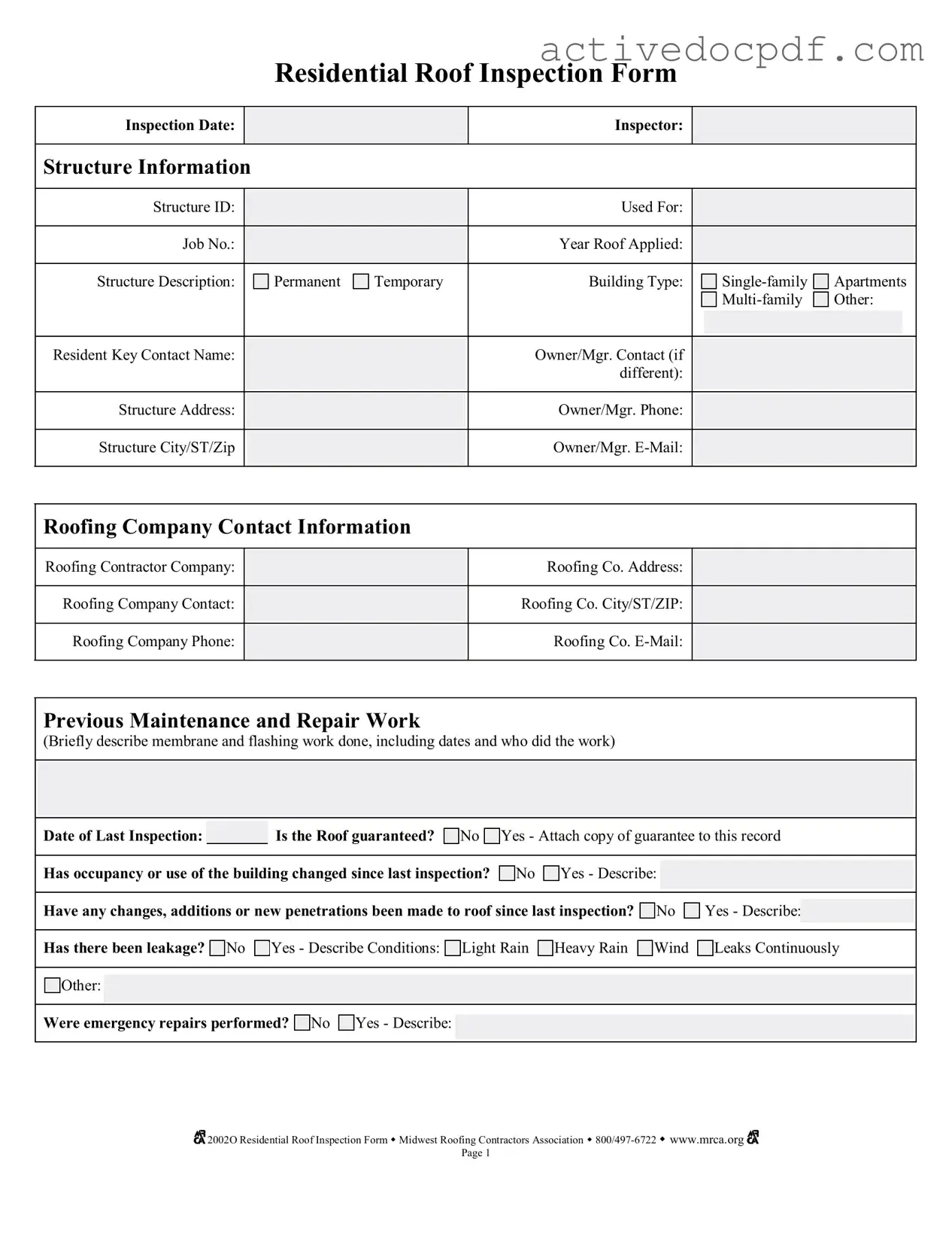The Roof Inspection Form requires several key pieces of information to ensure a comprehensive evaluation. This includes the inspection date, the inspector's name, and details about the structure, such as its ID, type (single-family, multi-family, etc.), and address. Additionally, contact information for the roofing company and the owner or manager is necessary. Previous maintenance and repair work should also be documented, including dates and descriptions of any work performed. Finally, the form asks about any changes to the building's occupancy or roof since the last inspection.
How do I report the condition of the roof?
To report the roof's condition, the form uses a coding system. Inspectors will categorize each area as Good (G), Fair (F), or Poor (P). Each section of the roof, such as the interior roof deck, exterior walls, and drainage systems, will be assessed for specific conditions. For example, the inspector may note issues like corrosion, cracking, or water stains. It is crucial to provide detailed observations and any actions taken to address these conditions. This systematic approach helps ensure that all potential problems are documented and can be monitored over time.
What should I do if there has been leakage?
If leakage has occurred, it is important to describe the conditions under which it happened. The form allows you to specify whether the leakage was noted during light rain, heavy rain, or other circumstances. Additionally, you should indicate if emergency repairs were performed and provide details about those repairs. Documenting leakage accurately helps in assessing the roof's integrity and determining necessary future actions.
Why is it important to keep a historical record of roof inspections?
Maintaining a historical record of roof inspections is vital for several reasons. First, it allows for tracking the roof's condition over time, making it easier to identify patterns or recurring issues. Second, having a detailed history can be beneficial for warranty claims or insurance purposes. Lastly, it supports informed decision-making regarding maintenance and repairs, ultimately extending the lifespan of the roof and ensuring the safety of the structure. Keeping copies of inspection forms and photographic evidence is essential for this historical record.
